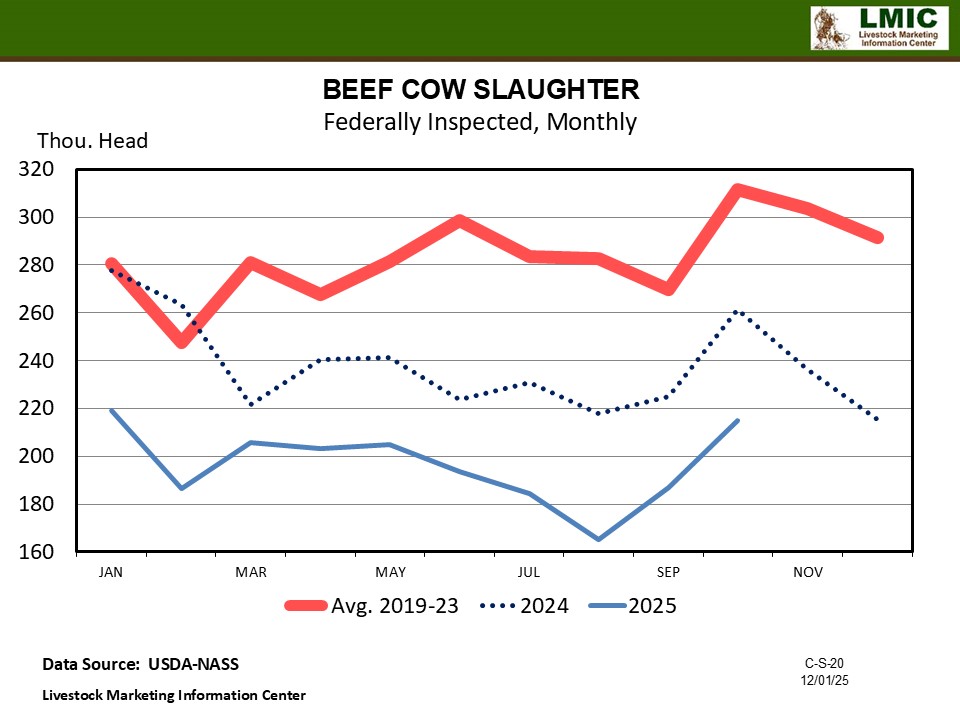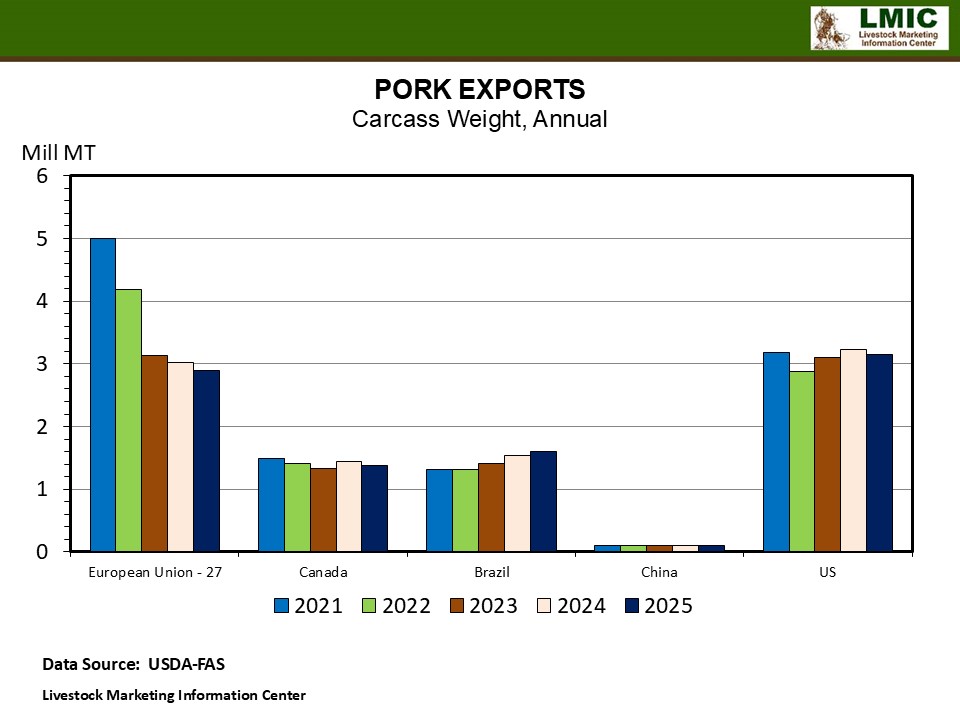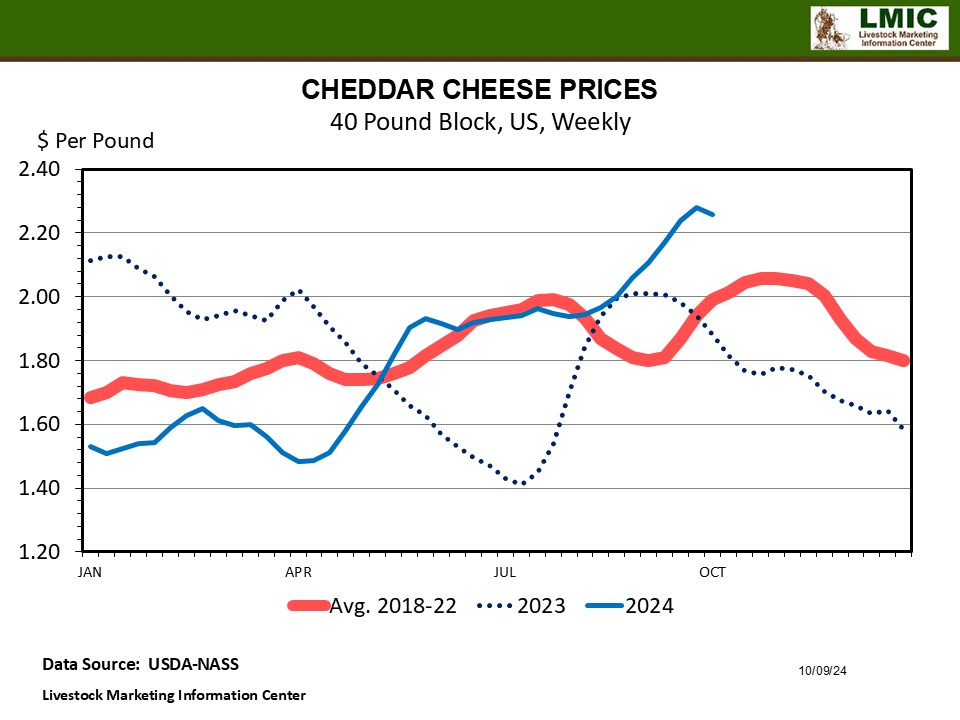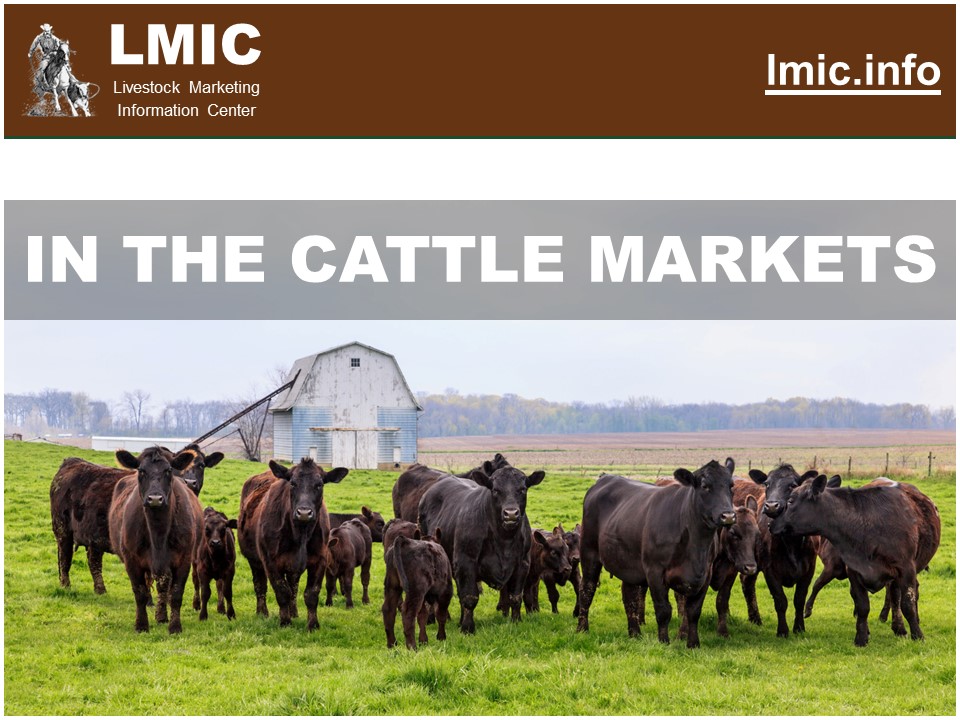Livestock Marketing Information Center
In The Cattle Markets
Updated: 12/8/2025
Seasonal Retreat from Record Highs
My apologies for the ‘I told you so’ – I recognize I am very often wrong – but cattle prices were well-above levels implied by market fundamentals through much of this late summer and into fall–and this has been talked about in prior newsletters. A reasonable set of demand elasticities and supply information from the Cattle on Feed reports suggested fed animal prices closer to $215/cwt this fall – and not the better than $240 observed. Similarly, with the calculated boxed beef composite value often above $370/cwt and occasionally above $400/cwt, then packers needed to pay less than $230 to break even. This did not happen and has not for a while – that is, fed cattle trading below packer breakeven. It looks to me as if the packing industry hasn’t made any money for better than two years – and I know cattlemen don’t care – but it’s not reasonable to expect losses to continue for the foreseeable future. Fed cattle prices had to retreat, and smaller animal prices with them. The seasonal timing is not a surprise.
Livestock Monitor
Updated: 12/5/2025
YEAR-TO-DATE RED MEAT PRODUCTION IS DOWN FOR MAJOR PLAYERS
USDA-NASS released their monthly Livestock Slaughter report on December 1, with the delayed publication backfilling data missed due to the government shutdown. Year-to-date through the end of October, cattle slaughter has fallen -6.7% to 24.9 million head. This marks the third consecutive year of decline, with the reduction in head slaughtered more than twice the magnitude of last year’s decrease (-2.9% from 2023-24) and +2.5% greater than the change from 2022-23 (-4.2%). Throughout 2025, volume losses have been led by steers and heifers, down -596,000 head (-4.7%) and -581,000 head (-7%), respectively. Compared to prior troughs in slaughter around 2015, declines in heifer slaughter remain smaller than those observed then (2013-14: -8.6%; 2014-15: -13.2%).
AFRICAN SWINE FEVER HITS SPAIN
A major development has occurred over the last week in global swine production. Spain, one of the top global pork exporters, reported cases of African swine fever (ASF) in wild boars in the Catalonia region near Barcelona. According to the World Organization for Animal Health, this is Spain’s first ASF case since September 30, 1994. In 2024, Spain had the largest swine inventory in the European Union at nearly 34.6 million head and a breeding sow inventory of more than 2.6 million head, according to Eurostat. From January through September this year, Spain’s pork production totaled almost 3.9 million metric tons (MT), up nearly +7% from the same period last year. Spain’s pork exports were near 1.9 million MT through the first three quarters of the year, up about +1% from last year.
DAIRY MARKET OUTLOOK FOR EARLY 2026 THREATENED BY BUTTER PRICES
November dairy product price trends were not encouraging for the milk price outlook going into 2026. Wholesale butter prices fell to $1.50 per pound, down $0.12 from the prior month, $0.78 from 90 days earlier, and the lowest monthly average price since February 2021. Forty-pound block cheddar cheese prices were down $0.18 per pound and the lowest price in a year and a half. In the midst of these price declines, non-fat dry milk prices increased by a penny in November.
Livestock Monitor (pdf)




